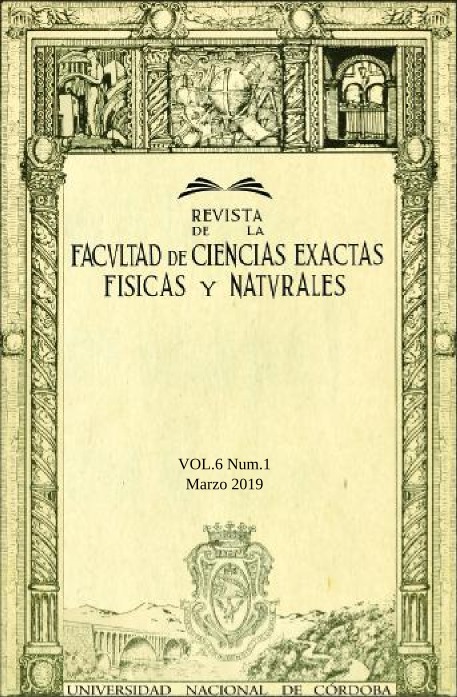Ver ítem
- xmlui.general.dspace_homeCentros e Institutos de InvestigaciónCIAP. Centro de Investigaciones AgropecuariasInstituto de Patología VegetalArtículos científicosxmlui.ArtifactBrowser.ItemViewer.trail
- Inicio
- Centros e Institutos de Investigación
- CIAP. Centro de Investigaciones Agropecuarias
- Instituto de Patología Vegetal
- Artículos científicos
- Ver ítem
Proteínas totales y perfiles SDS-PAGE de suelos agrícolas bajo fertilización mineral
Resumen
Los microorganismos son fundamentales para el mantenimiento de las funciones de suelos naturales y agrícolas. La identificación de proteínas del suelo podría proporcionar una valiosa información sobre las capacidades funcionales de los microorganismos que lo habitan y que están sujetos a diferentes condiciones de estrés. El estudio de las proteínas del suelo podría ser utilizado para caracterizar la respuesta de las comunidades microbianas a la aplicación
[ver mas...]
Los microorganismos son fundamentales para el mantenimiento de las funciones de suelos naturales y agrícolas. La identificación de proteínas del suelo podría proporcionar una valiosa información sobre las capacidades funcionales de los microorganismos que lo habitan y que están sujetos a diferentes condiciones de estrés. El estudio de las proteínas del suelo podría ser utilizado para caracterizar la respuesta de las comunidades microbianas a la aplicación de contaminantes, fertilizantes u otros cambios ambientales. El objetivo del presente trabajo fue determinar el impacto de diferentes combinaciones de fertilizantes minerales en los perfiles proteínicos de un suelo agrícola propio de la región con mayor productividad del país. Los muestreos realizados en el presente estudio estuvieron bajo un sistema conservacionista de rotación de cultivos (maíz/soja) y siembra directa por más de 10 años. Se midió el contenido de proteínas totales y se realizaron perfiles proteicos SDS-PAGE. Se observaron, incrementos en el contenido de proteínas totales en los suelos fertilizados en relación al testigo. La aplicación de N alteró el perfil de bandas proteicas encontrado por SDS-PAGE, solo en los suelos con cultivo de superficie maíz.
[Cerrar]
The microorganisms are fundamental for the maintenance of the functions of natural and agricultural soils. In this sense, the identification of soil proteins could provide valuable information about the functional capacities of the microorganisms that inhabit it and that are subject to different stress conditions. The study of soil proteins could be used to characterize the response of microbial communities to anthropic disturbances as the application of
[ver mas...]
The microorganisms are fundamental for the maintenance of the functions of natural and agricultural soils. In this sense, the identification of soil proteins could provide valuable information about the functional capacities of the microorganisms that inhabit it and that are subject to different stress conditions. The study of soil proteins could be used to characterize the response of microbial communities to anthropic disturbances as the application of contaminants, fertilizers or other environmental changes. The aim of this work was to determine the impact of different combinations of mineral fertilizers on the protein profiles of an agricultural land typical of the region with the highest productivity in the country. The samplings carried out in the present study were under a conservationist system of crop rotation (corn / soybean) and no till for more than 10 years. The total protein content was measured and SDS-PAGE protein profiles were made. Increases in the total protein content in the fertilized soils were observed in relation to the control. The application of N altered the profile of protein bands found by SDS-PAGE, only in soils with corn.
[Cerrar]

Autor
Verdenelli, Romina Aylen;
Mascanfroni, Gisela Daniela;
Dominchin, Maria Florencia;
Barbero, Florencia Magali;
Vargas Gil, Silvina;
Meriles, Jose Manuel;
Fuente
Revista Facultad de Ciencias Exactas, Físicas y Naturales 6 (1) : 51-55. (Marzo 2019)
Fecha
2019-03
Editorial
Facultad de Ciencias Exactas Físicas y Naturales, Universidad Nacional de Córdoba
ISSN
2362-2539
Formato
pdf
Tipo de documento
artículo
Palabras Claves
Derechos de acceso
Abierto
 Excepto donde se diga explicitamente, este item se publica bajo la siguiente descripción: Creative Commons Attribution-NonCommercial-ShareAlike 2.5 Unported (CC BY-NC-SA 2.5)
Excepto donde se diga explicitamente, este item se publica bajo la siguiente descripción: Creative Commons Attribution-NonCommercial-ShareAlike 2.5 Unported (CC BY-NC-SA 2.5)


